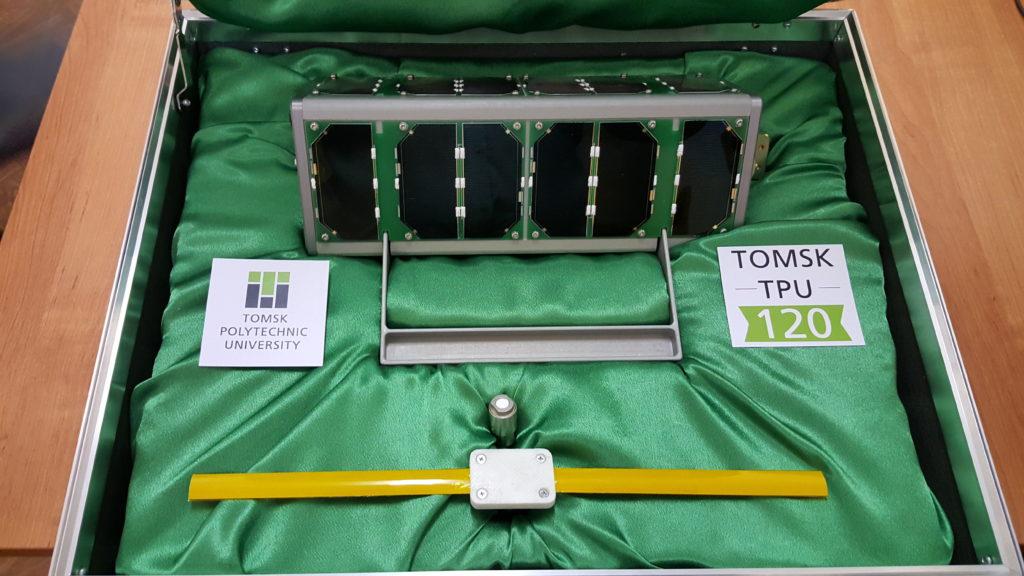 There have been many big announcements and firsts when it comes to 3D printing items for space, and in space. The small but mighty TruClip was sent to the International Space Station (ISS) last June; you can now have your laugh 3D printed in space; and the Russian space agency Roscosmos is developing an experiment that would allow astronauts to 3D printed living tissue aboard the ISS. Speaking of Russia, in March we told you about their 3D printed CubeSat nanosatellite being sent up to the ISS. The small, fully-functional Tomsk-TPU-120 satellite is the first of its kind, and was created by scientists from Tomsk Polytechnic University in Siberia. It is now on track to be placed into orbit in July of 2017.
There have been many big announcements and firsts when it comes to 3D printing items for space, and in space. The small but mighty TruClip was sent to the International Space Station (ISS) last June; you can now have your laugh 3D printed in space; and the Russian space agency Roscosmos is developing an experiment that would allow astronauts to 3D printed living tissue aboard the ISS. Speaking of Russia, in March we told you about their 3D printed CubeSat nanosatellite being sent up to the ISS. The small, fully-functional Tomsk-TPU-120 satellite is the first of its kind, and was created by scientists from Tomsk Polytechnic University in Siberia. It is now on track to be placed into orbit in July of 2017.
Russian cosmonauts will launch the satellite from the outer surface of the ISS this summer, which will be, according to Yakovlev, “a tricky and expensive procedure, preceded by repair of the modernization of the space outpost.” Once it is launched, the Tomsk-TPU-120 will be in free flight mode for about six months, during which time its orbit will gradually ebb, until it eventually reaches the dense layers of the atmosphere, where it will be destroyed.“The Tomsk-TPU-120 is the first such project in the world, in which the entire casing of a satellite is fully printed using dynamic modeling,” said Yakovlev. “The combination of these technologies can significantly reduce the development time and the number of full-scale tests, find new engineering solutions and reduce the project’s cost.”
Yakovlev said, “Experiments with the satellite were conducted not only on board the ISS, but also on the ground. Many radio amateurs from all across the world were able to catch a satellite signal on their radio stations, and posted videos of it on the Internet.”
Take a look at their video of people picking up the satellite signal from the ground; really, all you need to do is listen!
Yakovlev says the Tomsk-TPU-120 will not be the last small satellite they work on developing during their ongoing project:
“The current project is just the first stage of a long-term project to develop and create small, multi-purpose satellites. In particular, this work pertains to the creation of an on-orbit group of satellites dealing with many urgent problems related to agriculture, forest fires, climate change and natural resources.”
He also mentioned that just a couple months ago, Roscosmos approved experiments that would focus on creating CubeSat satellites on board the ISS, with the help of a 3D printer, and being placed in orbit from there. These small, lightweight satellites are usually at least partially 3D printed, and can be launched for all sorts of purposes, including Earth imaging and atmospheric research.
Discuss in the CubeSat forum at 3DPB.com.
[Source: Sputnik News]
Subscribe to Our Email Newsletter
Stay up-to-date on all the latest news from the 3D printing industry and receive information and offers from third party vendors.
You May Also Like
Latest Earnings Overview for Australian 3D Printing Firms Titomic and AML3D
Australian 3D printing manufacturing firms Titomic (ASX: TTT) and AML3D (ASX: AL3) reported their financial results for the period from July to December 2023, marking the first half of their...
Correction: 3D Printing Service Fathom to Merge with CORE Affiliate Amid Financial Challenges
Correction 4/8/24: A previous version of this story incorrectly speculated that Fathom would merge with CORE portfolio company UPTIVE. The article has been updated to remove that reference. As discussed...
3D Printing Financials: Unpacking Farsoon and BLT’s 2023 Performance
In the Chinese 3D printing industry, two companies, Farsoon (SHA: 688433) and Bright Laser Technologies, or BLT (SHA: 688333), have recently unveiled their full-year earnings for 2023. Farsoon reported increases...
3D Printing Financials: Shapeways Faces Challenges Despite Revenue Uptick
Shapeways (BCBA: SHPW) faced a challenging year in 2023, with financial results showing a mix of growth and setbacks. While the company saw an increase in revenue and gross profit,...

































